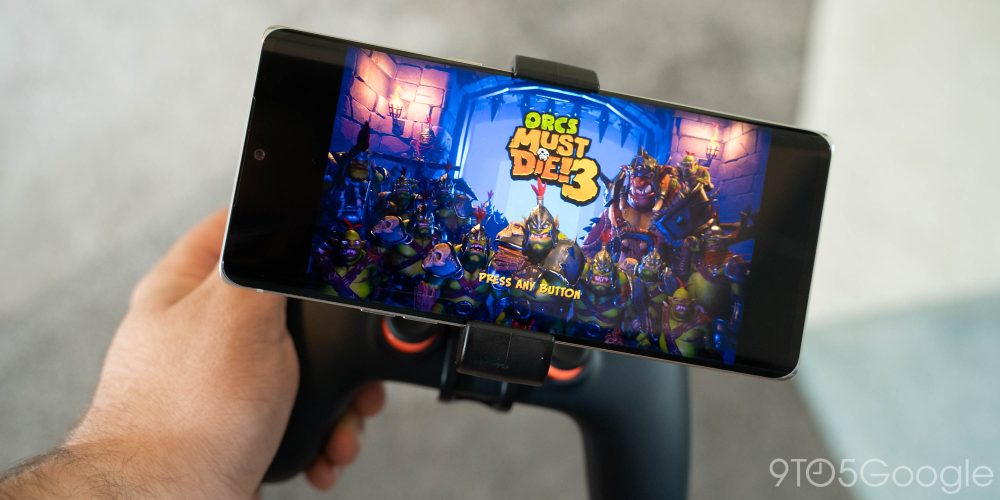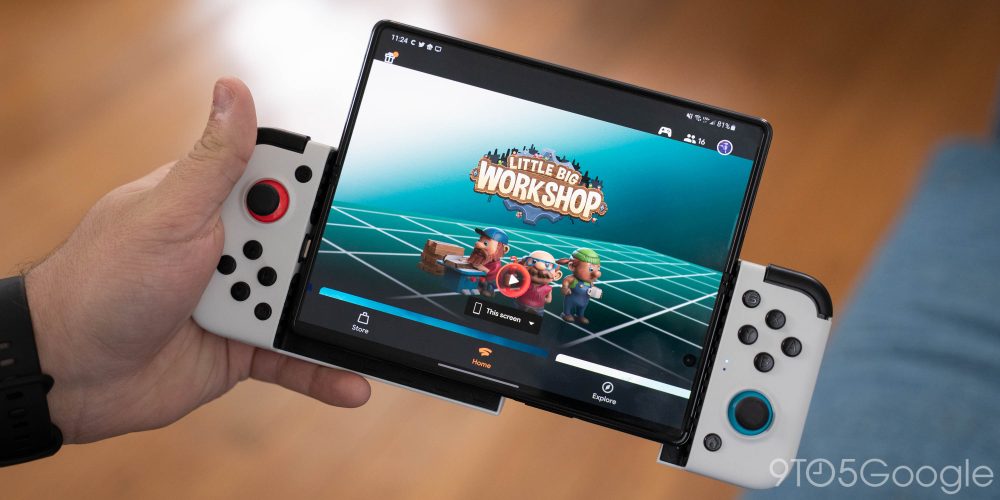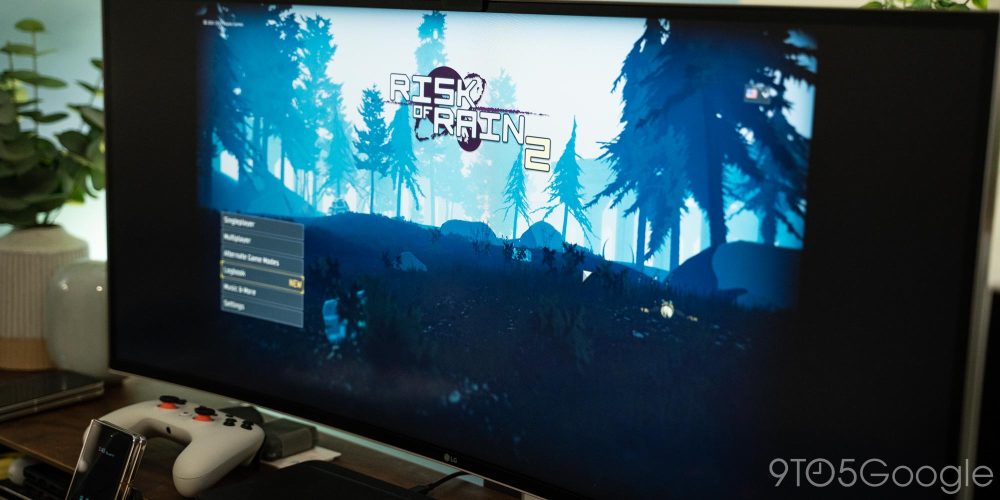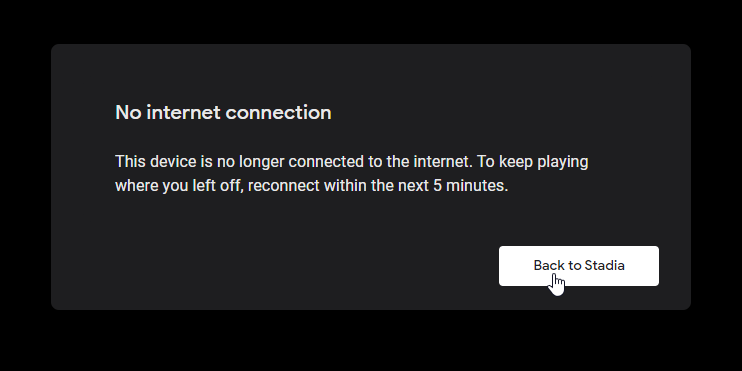
Google Stadia was never a perfect product, but it was the first real cloud gaming play that many people experienced. As the platform shut down earlier this week, one last gaming session reminded me of the best, and the worst, that Stadia had to offer.
I was a reasonably active Stadia player from around mid-2020 through mid-2022. It wasn’t my only gaming platform, but it was the one I wanted to use more than any other, and that was mainly because it solved a lot of the problems I had with video games. Stadia took away the frustrating console updates, the lengthy download times, and the storage woes that I’m having to get used to again on other devices.
But in its final hours, many of those weren’t what I was focusing on. Rather, I just wanted to spend some time getting lost in games on the platform I wanted to succeed.
Jumping into Risk of Rain 2, the game I played most on Stadia, was quick and easy, and I loved being able to play for over two hours without my desktop PC making any excess noise. When I play the same game on Steam, my CPU and GPU fans end up barely keeping up, and making a ton of noise as a result. Really, I’d forgotten just how much of a delight this aspect of Stadia alone is.
Playing this game in particular also reminded me of something that Stadia did for me. It introduced me to a lot of games that I probably wouldn’t have played otherwise, including Risk of Rain 2. A side effect of the lack of games available on the platform was that, when something finally did pique my interest, I was hooked. The same thing happened when Orcs Must Die 3 debuted on 2020, and Little Big Workshop, too.


But at the same time, this last session also reminded me why playing on Google Stadia could be so frustrating.
The graphical quality of Stadia always left a lot to be desired compared to a native game, and it’s something that I feel more and more each time I’ve played. Risk of Rain 2 is a great-looking game, but Stadia tends to feel like it’s playing everything through a filter, with elements of the game often looking a bit fuzzy. This is pretty common with cloud gaming services, but it’s something that Google never really worked on in any major capacity. The same goes with frame rates. I’ve been mainly playing local games on my PC in recent months which can take full advantage of my monitor’s 75Hz refresh rate, where Stadia was locked at 60fps or less. It’s a difference that, now, I can really feel. Plus, playing on an ultrawide display on Stadia left black bars along the side which really cuts out of the immersion.

And the experience you have on Google Stadia really hinges on your internet connection. This aspect, above all else, is one of the main reasons I’d been moving away from Stadia over the past several months. My neighborhood is located in the center of a Spectrum monopoly, and despite my best efforts with new networking upgrades, I can’t solve the degradation I’ve seen with cloud gaming especially over the past few months. Even on my last Stadia sessions, my connection decided to just randomly drop entirely, kicking me out of the game and scrambling to get back in before it closed off. This did remind me of a useful Stadia feature, though – the ability for games to stay open for a few minutes in the event of a disconnect or network change.

Perhaps one of the biggest problems with Stadia was really just that there were a lot of factors out of the player’s control. This felt evident as our Risk of Rain session went on, as all three of us playing started to realize that things were feeling a lot slower. Why? Our best guess was that Google was starting the shutdown, slowly ramping down servers ahead of the 11:59 p.m. PT cutoff.
In Stadia’s closing hours, the question I kept asking myself was if the positives of Stadia really outweighed the negatives. And, really, it just depends on the person.
For someone without access to pricey PC gaming hardware, or space for a traditional console, Stadia made a whole lot of sense. It was also a great way to play games across devices, which was the main thing that attracted me to the platform initially. In the end, though, the best Stadia had to offer just wasn’t as good as what everyone else had. It was clear games weren’t coming, and that needed performance upgrades were coming to other cloud gaming services instead.
Was Google right to shut down Stadia? Absolutely not.
Stadia always needed to be a long-term play, and Google time and time again showed that it wasn’t willing to give its all. There was always a chance Stadia could have played the really long game, and clawed its way to relevance by going for niche markets, but I think we all knew somewhere that wouldn’t have worked out. Once EA, Ubisoft, and Google itself started to give Stadia the short end of the stick, the writing was on the wall, and it was only a matter of time.
As the closure of Stadia came closer, I ended up spending some time in “Worm Game,” the game that Google used to test Stadia before it launched, and the last game that was released to players. The game itself is nothing particularly special, but what it represents is what mattered. That game was essentially one last move from the team behind Stadia to say thank you to players, and a reminder of the other thing that made Stadia great – the people behind it and the community that used it.
The people working on Stadia were dealt a crappy hand time and time again, but did the best they could and built something that truly was special, even if it was held back.
I’ll miss Stadia, and I’m glad I got to use it one more time, but it really feels like the baton has been passed to others to carry on the cloud gaming vision. RIP.
More on Google Stadia:
- What will you miss about Google Stadia?
- Google Stadia’s total player count hinted at by dismal Destiny 2 stats
- Here’s how the Stadia Controller works with Bluetooth
FTC: We use income earning auto affiliate links. More.


Comments